|
|
CALENDARIO HEBREO-SHABBAT LUNAR: PENTECOSTES/SHAVUOT ¿CUAL ES SU DIA?
Choose another message board |
|
Reply |
Message 1 of 309 on the subject |
|
THE COUNT TO PENTECOST “PROVES” LUNAR SABBATHS
The only way the Hebrew speaking Jews and the Greek speaking Jews could have arrived at Pentecost on the same day is by Lunar Sabbaths. This is an absolute because the word Sabbath in Leviticus 23:11 is the Hebrew word for the weekly Sabbath and thousands of people have this knowledge including the Hebrew speaking Jews.
On the other hand, thousands of people including the Greek speaking Jews have the knowledge that the morrow after the Sabbath is referring to the 16th (Day after the 15th/weekly Sabbath) of the first month every year because in the Greek Septuagint it says, “on the morrow of the first day the Priest shall of wave it”, it is a FACT that the first day in the Septuagint is referring to the 15th or first day of unleavened bread, and the morrow after the 15th, (or 1st day), is the 16th.
We know from the book of Acts that they where Greek speaking Jews as well as Hebrew speaking Jews from every nation kindred and tongue, including Greek speaking Jews from Alexander Egypt, gathered for the day of Pentecost. Some read from the Septuagint and some read from the Hebrew text and both had to have known that the 15th was the weekly Sabbath because they were at Pentecost on the same day and started there count from the same day.
The point is this, when these Greek speaking Jews read the Septuagint and started their count for Pentecost on the morrow after the 15th every year and they arrived on the same day as the Hebrew speaking Jews that began the count on the morrow after the weekly Sabbath, this can only mean one thing and that is that the Hebrew speaking Jews and the Greek speaking Jews understood the 15th to be the weekly Shabbat and they started their count for Pentecost on the same day as the Greek speaking Jews that read from the Septuagint, i.e. from the morrow of the 1st day of unleavened bread.
In other words, these thousands of people on both sides are right because the ones that believe the morrow after the 15th, which is the 16th, is right and the ones that believe the morrow after the weekly Sabbath, which is the 16th is right.
Later on their fathers had compromised the lunar week for the Roman week and the Pentecost debate began.
Both Josephus and Philo records that the count for Pentecost begins on the 16th which is the morrow after the Sabbath and the Septuagint was read and quoted from, same as the Hebrew text, and everyone was at Pentecost on the same day and there was no controversy among them concerning Pentecost until they adopted the false Roman week that is followed today.
The Universally Jewish Encyclopedia and another 100-year-old Jewish Encyclopedia by Funk & Wag, both records that ancient Israel originally kept lunar weeks and lunar Sabbaths.
Philo the Jew, which lived at the same time our Saviour did, records that the weeks were by the moon and also Clement of Alexander. Most people know that the month were originally by the moon but failed to realize that the 4 phases of the moon were used for the weeks.
At the end of a Roman week you have a Roman sabbath and at the end of a Lunar week you have a Lunar Sabbath.
Click Here for True Pentecost http://lunarsabbath.info/id4.html
Click Here and see that Philo and the Jews of our Saviour's day kept Pentecost 50 days AFTER the 7th Sabbath, which is in line with Lev-23, and "NOT" 50 days after the wave sheaf,
http://lunarsabbath.info/id16.html
For more information Click Here For The Truth
For more information you may call or write to:
Bro. Arnold Bowen
3466 Hightower Tr.
Conyers, Georgia 30012 USA
Or call (770) 483-8542
Email to: YHWHpeople@aol.com
|
|
Amos 8 Proves Pentecost in the 4th month
Amos 8:4-6
4Hear this, O ye that swallow up the needy, even to make the poor of the land to fail, 5Saying, When will the new moon be gone, that we may sell corn? and the sabbath, that we may set forth wheat, making the ephah small, and the shekel great, and falsifying the balances by deceit? 6That we may buy the poor for silver, and the needy for a pair of shoes; yea, and sell the "refuse" of the wheat?
It is likely that the merchants would have said this around wheat harvest, when the "refuse"/chaff of the wheat was still handy and everyone was anticipating the new grain, not something that they would say every New month/moon.
The Hebrew word for “refuse” is
H4651
îÇôÌÈì
mappâl
map-pawl'
From H5307; a falling off, that is, chaff; also something pendulous, that is, a flap:—flake, refuse.
The only time I see that they could sale this chaff would be at the beginning of the wheat harvest when everyone was busy buying the fresh grain.
Another reasonthat Amos 8 fit quite well with lunar Sabbatarians doctrine of my persuasion is because the “very first day” that the new (Pentecost) wheat harvest can be set forth for sale is “always” after the last weekly Sabbath of the month/moon (on the 29th) which is “always” followed by a one or two day new moon feast and this is likely when this statement would be made by the wicked, “When will the new moon be gone, that we may sell corn? and the sabbath, that we may set forth wheat,” i.e. the earliest anyone could sale wheat would be after the new moon day.
The crooked merchants could hardly wait for the Sabbath and new moon day to be over so they could cheat the people in selling them grain from this new fresh wheat, which was mixed with the refuse (chaff). The chaff should be separated from the wheat but the chaff could be mixed in with the wheat around Pentecost and sold "after" the Sabbath and new moon had passed but not before. i.e. you have Pentecost then Sabbath then new moon and then they could set the wheat out for sale but no one would sale or buy it until after the new moon and Sabbath was gone.
The reason I believe that the vision that Amos 8 is talking about is one the three festival/chag each year, which is always celebrated at one of the three harvests, Passover, Pentecost, or tabernacles, is because,
#1. Singing in the temple is mentioned in verse 3, and singing on the Chag/feast is a Law of YHWH.
Psalm 81
1 Sing aloud unto Elohim our strength: make a joyful noise unto the Elohim of Jacob.
2 Take a psalm, and bring hither the timbrel, the pleasant harp with the psaltery.
3 Blow up the trumpet in the new moon/month, in the time appointed/full moon, on our solemn “feast” day/Chag.
- For this was a statute for Israel, and a “law” of the Elohim of Jacob.
So we see here that singing on the Chag/feast is a Law of YHWH and this is what they were doing in Amos 8:1
|
|
|
|
|
Reply |
Message 265 of 309 on the subject |
|
|
|
|
Reply |
Message 266 of 309 on the subject |
|
|
|
|
Reply |
Message 267 of 309 on the subject |
|
Quote:
Originally Posted by orslah  I kept looking at the Fibonacci Numbers;
Love Debbie
|
http://breakfornews.com/forum/viewto...er=asc&start=0Debbie I am not sure if you have seen this link. it is a compilation of FIBONACCI sources that connect to the pattern detected by moi, regarding the numbers 11, 2, 5, 8 AND some folks in their holier-than-thou IGNORANCE, (and there are many on these forums) seem to believe that only *experts* can see divine patterns? Back to remembering... later I found out the Masonic cipher is 3. (because of its association to gimel and gamma, the two languages that used similar forms of gematria long ago, among other reasons....) so when we add the cipher 3 to 11, 2, 5, 8
the FIGURATIVE FIB that is being VEILeD by the big LITERAL LIE called jesus reveals itself.
So I am suggesting that the advertising camPAIN called jesus was used to VEIL LAWS of NATURE from the pagans that the Church was trying to convert?
Occams Razor applies here folks, in a very big way...why delude yourselves with HIS-story based on the LITERAL LIE called jesus, born 2000 years ago.
An archetypal FIGURATIVE jesus was born 6000 years ago.
Easily proved, based on this zodiacal CODE that folks should start their end of daze with
... 1, 1, 2, 3, 5, 8,
http://breakfornews.com/forum/viewtopic.php?t=5228&postdays=0&postorder=asc&start=0 I love coincidences that reveal patterns... take a look at the post number assigned to that thread I just linked you too. #5228 or 11, 2, 5, 8?  random? or design? design of course, based on certain patterns, just ask the Mann who supplies the NOBEL GEL, the glue that binds all of EWE to YOU using a U?  And the U looks like a magnet or cosmic good luck horseshoe to me. lol lol lol And please note that the horseshoe shape fits nicely into St. Peter's Square.... 
2 versions of OMEGA, man AND please note that the U used as a horseshoe in the image above resembles an upside down OMEGA symbol too? OR that the Masonic cipher 3 can look like an omega symbol too if rotated 90 degrees through space? Mind if I ask a rhetorical question Debbie based on the above image? Why oh why was the Temple of Del phi and the letter/shape/glyph 'E' attributed to Apollo who we see has a swastika on his chest, just like the Buddha?  2 FISH and 5 LOAVES of BREAD 2 FISH and 5 LOAVES of BREAD = Marko Rodin's cosmic blender concept re: 25Betcha...  Courtyard of the Church of the Multiplication where the miracle of 5 loaves of bread and 2 fish took place, on the shores of the Sea of Galilee. I love patterns...Am I being lead back to the source? By what? right click and take a look at the url # of this image that I posted off the web...OBVIOUSLY the Church of the Multiplication is to be a part of the narration I am supplying. i.e. this is the photo url. http://photos.travellerspoint.com/172034/_DSC5082.jpg You need to know, that before I was lead to 11, 2, 5, 8, I was exploring the numbers 528....re: the solfeggio frequency that heals DNA, as some researchers claim. I was born at 5:28 am? regarding the Church of the Multiplication I want to ask the following questions... a/ does it look like an OMEGA symbol? YES b/ does it fit into st. peter's square? YES c/ is it a mnemonic/shape/temple design pointing toward the Holy Grail, the ARK, our DNA? YES d/ does this 'omega' temple shape fit the binary (1 and 0 ) representation, of what we find in St. Peter's Square Ellipse, as seen from above? YES lordy lordy lordy do ya see it dude? ground control to major tomtom the pope is sending you a message... go here>>> HOLY GRAIL found in ARECIBO Messagehttp://kachina2012.wordpress.com/200...ecibo-message/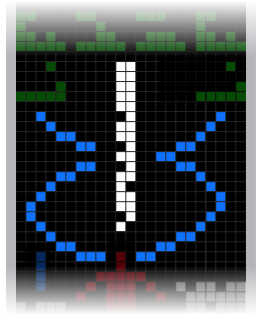  namaste
Last edited by raphael; 29-06-2010 at 03:31 PM.
|
|
|
|
Reply |
Message 268 of 309 on the subject |
|
|
|
|
Reply |
Message 269 of 309 on the subject |
|
|
|
|
Reply |
Message 270 of 309 on the subject |
|
The Feast of Weeks- Pentecost
 The Feast of Weeks, also known as Pentecost was a celebration of thanksgiving at the end of the barley, grain and wheat harvests. In the Jewish faith, the Feast of Weeks also known as Shavuot commemorated the anniversary of Moses bring the law down from Mount Sinai in the tables of stone. You will find in this article that the timing of this holy feast day has been tampered with for many generations. The count to Pentecost/Shavuot in the bible is completely different than the count to Pentecost practiced by Jews and Christians today. To begin gaining an understanding of this statute of God, let’s look to scripture: The Feast of Weeks, also known as Pentecost was a celebration of thanksgiving at the end of the barley, grain and wheat harvests. In the Jewish faith, the Feast of Weeks also known as Shavuot commemorated the anniversary of Moses bring the law down from Mount Sinai in the tables of stone. You will find in this article that the timing of this holy feast day has been tampered with for many generations. The count to Pentecost/Shavuot in the bible is completely different than the count to Pentecost practiced by Jews and Christians today. To begin gaining an understanding of this statute of God, let’s look to scripture:
“And thou shalt observe the feast of weeks, of the firstfruits of wheat harvest, and the feast of ingathering at the year’s end.” ~ Exodus 34:22
“And ye shall count unto you from the morrow after the sabbath, from the day that ye brought the sheaf of the wave offering; seven sabbaths shall be complete: Even unto the morrow after the seventh sabbath shall ye number fifty days; and ye shall offer a new meat offering unto the Lord. Ye shall bring out of your habitations two wave loaves of two tenth deals; they shall be of fine flour; they shall be baken with leaven; they are the firstfruits unto the Lord. And ye shall offer with the bread seven lambs without blemish of the first year, and one young bullock, and two rams: they shall be for a burnt offering unto the Lord, with their meat offering, and their drink offerings, even an offering made by fire, of sweet savour unto the Lord. Then ye shall sacrifice one kid of the goats for a sin offering, and two lambs of the first year for a sacrifice of peace offerings. And the priest shall wave them with the bread of the firstfruits for a wave offering before the Lord, with the two lambs: they shall be holy to the Lord for the priest. And ye shall proclaim on the selfsame day, that it may be an holy convocation unto you: ye shall do no servile work therein: it shall be a statute for ever in all your dwellings throughout your generations.” ~ Leviticus 23:15-21
The sacrifices:
- This involves two wave loaves “baked with leaven“
- They would offer 7 first year lambs, 1 bulls, and 2 ram
- It also included meat offerings and drink offerings
- They would offer 1 kid goat for a sin offering
- They would offer 2 lambs of the first year for a peace offering
- The priest would wave these 2 lambs along with the wave loaves of the firstfruits as an offering before the Lord
- This is to be observed forever, throughout our generations
So you can see that this was a day of thanksgiving at the end of the wheat harvest. What you may be puzzled by is the leaven in these loaves. As you probably know, leaven is representative of “sin” (See Feast of Unleavened Bread page). Why would they offer two loaves of the firstfruits of the harvest to include something that symbolizes sin? This couldn’t be understood until the fulfillment of the Feast of Weeks after the death of Christ, when His disciples on the day of the Feast of Weeks/ Pentecost received the Holy Spirit. Though they were full of sin, just as these two loaves of bread were full of leaven, they received the Spirit and blessing of God. These two loaves represented the Jew and Gentile who would be made one in Jesus Christ. The church today, the body of believers- still carries the sin of the flesh as we all fall short of God’s requirements, also symbolized in the leaven.
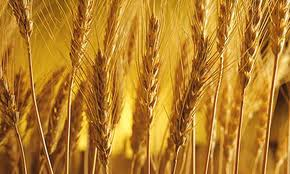 There has however been some misunderstanding in calculating the Feast of Weeks/Pentecost over the past many centuries. To find this misunderstanding we have to simply consult with God’s word itself. As mentioned earlier, according to the Jewish faith, this celebration is a commemoration of the giving of the Law by Moses at Mount Sinai. This understanding goes back thousands of years, yet today there is a problem. When you calculate the actual date that Moses came down from Mount Sinai with the Torah, this occured well after 50 days from the Day of Firstfruits (which falls on the 16th Day of the 1st Month). How can this be? All of Christianity, and the Jewish faith calculate Pentecost to be 50 days from the Day of Firstfruits, yet this doesn’t align with the purpose and history of the Feast? The reason for this, is that this feast has been miscalculated for hundreds of years. To calculate the exact date of Pentecost, one must use God’s lunar calendar, and obey the count given in Leviticus 23. Below is the count instructed: There has however been some misunderstanding in calculating the Feast of Weeks/Pentecost over the past many centuries. To find this misunderstanding we have to simply consult with God’s word itself. As mentioned earlier, according to the Jewish faith, this celebration is a commemoration of the giving of the Law by Moses at Mount Sinai. This understanding goes back thousands of years, yet today there is a problem. When you calculate the actual date that Moses came down from Mount Sinai with the Torah, this occured well after 50 days from the Day of Firstfruits (which falls on the 16th Day of the 1st Month). How can this be? All of Christianity, and the Jewish faith calculate Pentecost to be 50 days from the Day of Firstfruits, yet this doesn’t align with the purpose and history of the Feast? The reason for this, is that this feast has been miscalculated for hundreds of years. To calculate the exact date of Pentecost, one must use God’s lunar calendar, and obey the count given in Leviticus 23. Below is the count instructed:
“And ye shall count unto you from the morrow after the sabbath, from the day that ye brought the sheaf of the wave offering; seven sabbaths shall be complete: Even unto the morrow after the seventh sabbath shall ye number fifty days“ ~ Exodus 34:22
You can see here, that the count doesn’t only require “50 days”. The count begins the day after the sabbath (aka the high sabbath of the Feast of Unleavened Bread, which would fall on the 16th day of the 1st month), 7 sabbaths shall be complete…..THEN unto the morrow (day after) of the 7th sabbath shall you number 50 days. This is a considerably longer period of time between the Day of Firstfruits and Pentecost than has been ackowledged by mainstream Christianity and Judaism. What is even more revealing is that when you correctly count the Pentecost, it comes to the exact day when Moses came down from Mount Sinai with the Torah/Law. To explain in detail, you can follow along with the below Luni-Solar Calendar:

Calculated on the Lunar calendar, 7 sabbaths complete after the day of Firstfruits will always fall on the 8th day of the 3rd month. Counting 50 days from the 8th day of the 3rd month will always fall on either the 28th or 29th day of the 4th month depending on the number of days of the 3rd month of course determined by the moon. The Pentecost will always fall on the 28th or 29th day of the 4th month (June/July). Now let’s consider the story of Moses giving the law.
|
|
|
|
Reply |
Message 271 of 309 on the subject |
|
Calculated on the Lunar calendar, 7 sabbaths complete after the day of Firstfruits will always fall on the 8th day of the 3rd month. Counting 50 days from the 8th day of the 3rd month will always fall on either the 28th or 29th day of the 4th month depending on the number of days of the 3rd month of course determined by the moon. The Pentecost will always fall on the 28th or 29th day of the 4th month (June/July). Now let’s consider the story of Moses giving the law.
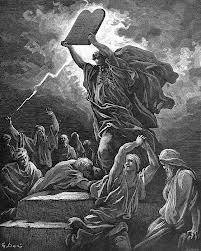 According to Exodus 19:1, the Israelites arrived at the base of Mount Sinai on the 15th day of the 3rd month. This already is more than 50 days after the day of Firstfruits. How could the Jews be celebrating the commemoration of Moses bringing the law down from Mount Sinai for thousands of years on a day which historically represents a time where the Israelites hadn’t even come to Mount Sinai yet? According to Exodus 19:1, the Israelites arrived at the base of Mount Sinai on the 15th day of the 3rd month. This already is more than 50 days after the day of Firstfruits. How could the Jews be celebrating the commemoration of Moses bringing the law down from Mount Sinai for thousands of years on a day which historically represents a time where the Israelites hadn’t even come to Mount Sinai yet?
“In the third month, when the children of Israel were gone forth out of the land of Egypt, the same day (15th) came they into the wilderness of Sinai.” ~ Exodus 19:1
The scriptures indicate that after the 15th day when they arrived, there were 3 days that the Israelites were sanctified:
“And the Lord said unto Moses, Go unto the people, and sanctify them to day and to morrow, and let them wash their clothes, And be ready against the third day: for the third day the Lord will come down in the sight of all the people upon mount Sinai.” ~ Exodus 19:10-11
This would make up the 16th, 17th and 18th day of the Third Month. Then on the 19th day Moses built an alter with twelve pillars representing the twelve tribes of Israel, and went up Mount Sinai to meet with God and receive the law/Torah:
“And Moses went into the midst of the cloud, and gat him up into the mount: and Moses was in the mount forty days and forty nights.” ~ Exodus 24:18
Here we can see that Moses went up to Mount Sinai to receive the law from God for 40 days and 40 nights. Counted out on the calendar, the date that Moses would descend from Mount Sinai with the Law/Torah and the tables of stone will always fall on the 28th or 29th day of the 4th month depending on the number of days in the 3rd month according to the moon. Do you see how perfect the true count to the Pentecost is? To the exact day, the count to Pentecost given in Leviticus 23 matches with the testimony of the actual date that Moses descended from Mount Sinai with the Law. It of course makes sense that the Jews honored this day as a commemoration of the day Moses came down from Mount Sinai with the Torah, as it falls on that exact day according to Jewish history. However, the Pharisees via the Talmud, along with Christianity has changed the count completely to mean only 50 days. Again the prophecy of the Beast comes up, that said that it would “change the times and change the laws.” This is another “time” that was manipulated unlawfully.
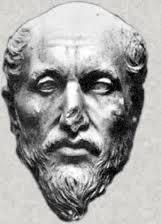 Philo of Alexandria also brings some clarity to this subject. Philo was a Jewish leader in Egypt during the time of a great massacre around the time of Jesus life. Philo was alive before Christ, and died after Christ- living during the exact time of Jesus’ life. He was selected by the Jews of Egypt to represent them and go before the emporer, revealing that he was highly regarded among the Jews of Jesus’ time. Here is what he had to say about the Pentecost: Philo of Alexandria also brings some clarity to this subject. Philo was a Jewish leader in Egypt during the time of a great massacre around the time of Jesus life. Philo was alive before Christ, and died after Christ- living during the exact time of Jesus’ life. He was selected by the Jews of Egypt to represent them and go before the emporer, revealing that he was highly regarded among the Jews of Jesus’ time. Here is what he had to say about the Pentecost:
“(65) we read about a group of Orthodox Jews called Therapeutae and Therapeutrides, Philo says, “they devoted their whole lives and themselves to the knowledge in contemplation of the affairs ofnature in accordance with the most sacred admonitions and “precepts of the Prophet Moses.” V111 (64) after saying this he continues by saying, “(65) In the first place, these men “assemble” at the “end” of seven weeks, venerating not only the simple week of seven days, but also its multiplied power, for they know it to be pure and always virgin; and “it” is “a “prelude” and a kind of “forefeast” of the “greatest” feast, which is assigned to the number fifty,” ~ Philo page 704, chapter eight (65) ON THE CONTEMPLATIVE LIFE V111
Here Philo explains that the “morrow after the 7th sabbath” was a prelude, and a kind of “forefeast” to the greatest feast assigned to the number 50. Today this prelude day is celebrated as the actual great Feast of Pentecost, yet according to scripture and historical record, this day is only a prelude to the true Feast. The true Day of Pentecost is found at the end of the 4th biblical lunar month every year, and cannot be calculated in advance. Rather it is always subject to God’s lights in the firmament marking each month with God’s accuracy.
 Further evidence from the time of Paul reveals that the Feast of Pentecost couldn’t possibly occur 50 days after the Day of Firstfruits. In Acts 20-21, the story begins after the Feast of Unleavened Bread, where Paul is trying to make it back to Jerusalem in time for the Feast of Pentecost. In mapping out his travels, and the number of days spent in different locations, you can see that it would be impossible for Paul to reach Jerusalem in time for Pentecost if it was only 50 days from the Day of Firstfruits. Consider the following travel schedule: Further evidence from the time of Paul reveals that the Feast of Pentecost couldn’t possibly occur 50 days after the Day of Firstfruits. In Acts 20-21, the story begins after the Feast of Unleavened Bread, where Paul is trying to make it back to Jerusalem in time for the Feast of Pentecost. In mapping out his travels, and the number of days spent in different locations, you can see that it would be impossible for Paul to reach Jerusalem in time for Pentecost if it was only 50 days from the Day of Firstfruits. Consider the following travel schedule:
-
Days of Unleavened Bread- 6 Days
-
Days Sailed to Traos (Philippi to Traos 150 Miles, 5 Days- 30 Miles/Day)- 5 Days
-
Days abode in Traos- 7 Days
- First day of the week- broke bread (2 sabbaths after end of Unleavened Bread)- 3 Days
- Sailed from Traos to Assos- 20 Miles- 1 Day
- Went to Chios- 3 Days
- Went to Samos, tarried in Trogyllium- 1 Day
- Came to Miletus- 1 Day
- From Miletus he sent to Ephesus and called the elders (Sent people to get them, probably 2-3 day journey)- 3 Days
- Set sail for Coos and came unto Rhodes (Miletus to Coos- 60 Miles, Coos to Rhodes is 50 Miles)- 3 Days
- Sailed from Phenicia, to Cyprus, to Syria and landed in Tyre- 3 Days
- Stayed in Tyre for 7 Days- Spirit said don’t yet go into Jerusalem- 7 Days
- Sailed from Tyre to Ptolemais- 1 Day
- Stayed in Ptolemais- 1 Day
- Went to Caesarea and abode with them- 1 Day
- Tarried for many days there in Caesarea (Was probably more than 7 days as Paul mentions specific 7 day visits, we will judge conservatively)- 7 Days
- Went to Jerusalem (70 Miles on Foot)- 3 Days
- Days of Purification- This would be something he would do prior to Pentecost (John 11:55 example)- 7 Days
- Extra Sabbath No Travel Days- 3 Days
Conservative Total = 60 Days
So you can see here from Paul’s travels when studied closely, it would have been impossible for him to make these travels and still make it to Jerusalem in time for the Feast of Pentecost as it is calculated in today’s standards of 50 days after the Day of Firstfruits. Things that aren’t taken into account above are the availability of travel, ships, boats etc. This conservative estimate implies that Paul had his travel needs supplied at his fingertips. This probably was not the case. This too points to the true calculation of the Feast of Pentecost- occurring 7 sabbaths complete after the Feast of Firstfruits, then unto the morrow after the 7th sabbath, number another 50 days.
Today we celebrate the Feast of Pentecost in remembrance of the outpouring of the Holy Spirit after the resurrection and assension of Jesus Christ, but we also look forward to an outpouring of the Holy Spirit again in the form of the “latter rain”. This is something that we continue to celebrate and pray for. We pray that out of faith you will seek to calculate the Feast of Pentecost in obedience to God’s word. We hope that this helps in your study of the Feast of Weeks/Pentecost.
|
|
|
|
Reply |
Message 272 of 309 on the subject |
|
15 dic. 2012 - In the Jewish faith, the Feast of Weeks also known as Shavuot ... The Pentecost will always fall on the 28th or 29th day of the 4th month ...
www.gabitos.com/DESENMASCARANDO_LAS_FALSAS.../template.php?nm...
15 jun. 2011 - THE COUNT TO PENTECOST “PROVES” LUNAR SABBATHS .... Sabbath of the month/moon (on the 29th) which is “always” followed by a one ...
www.gabitos.com/DESENMASCARANDO_LAS_FALSAS.../template.php?nm...
15 jun. 2011 - Both Josephus and Philo records that the count for Pentecost begins .... 4 de Julio/29 deThamus o 1 de Av (Verdadero Pentecostes en el dia ...
|
|
|
|
Reply |
Message 273 of 309 on the subject |
|
|
| Reply |
Message 10 of 11 on the subject |
|
|
APOCALIPSIS 3/PHILADELPHIA/LA LLAVE DE DAVID/INDEPENDENCIA DE EEUU
Secrets of Free4masonry7 - Sacred Geometry/gematria74, the key74: A=1...Z=26, i.e. GOD=7_4; whereas, G is the 7th letter, O is either 15 or zerO, and D is the 4th letter. 7/4=July 4 or 7 April 30 AD - Good(7__4) Friday with Jesus74 the Jewish74 Messiah74 on the Cross74 . Grand Master Masons Benjamin Franklin, George Washington, John447 Hancock740, Robert Livingston, and other Founding Fathers. General Washington's first full day as Commander of Continental Army was 7/4/1775. He would eventually have 74 generals, 33 were Mason47s. Liberty7 letters Bell4. 74 representatives to Constitutional Convention. Constitution's 7 Articles written on 4 pages. Federal7 City4's Southern Boundary was laid in a Masonic(M13+A1+S19+O15+N14+I9+C3=74) ceremony on March 15, 1787: the 74th day of the year. Capitol7 Hill4 and Lady4 Freedom7.
The Statue of Lady(4) Liberty(7) in the New York(7) City(4) harbor at 74 degrees west longitude was a gift from Mason(47)s from France(47). Masons in the US paid for and built the pedestal. She holds a tablet that has July 4, 1776 written on it (in Roman numerals), she has 7 rays coming from above her crown(73) and 4 columns on each of the 4 sides of the pedestal.
The upper degrees of Freemasonry teach the immortality of the soul through reincarnation, i.e. Hiram Abiff, and like the Kaballists, know that "The soul of Moses is reincarnated in every generation." Benjamin Franklin was 'the Christ' and he died on Y'shua(74)'s Birthday: 17/4 (4/17). July 4, 1776 encoded Jesus' Birthday of 4/17/6 BC. The Natl(47) Lincoln Memorial in DC ("4 score & 7 years ago") and the Natl Franklin Memorial in Philly were built around the same time and both sculptures are 19' with them sitting on a throne.
The ancient Egyptians with "As above, so below" began the science of sacred geometry. The naked eye sees 7 moving objects(74) in the heavens(74) and 4 don't cast shadows(74) on Earth. Lunar months(74) are 29.5 days and its 4 phases of 7.4 days each is where we get our 7-day-weeks x 4 in a 'moonth'. Lunar year of 354 days + 7-day-week + 4 days = 365 day solar year.
The Bible Code of GOD=7_4
The Standard/Biblical Cubits(74) are 6 palms x 4 fingers . The Egyptian Royal Cubit added a palm to make it sacred by mirroring the heavens: 7 palms x 4 fingers. This was used as the basic measurement for the py-ra-mids and all sacred buildings. Moses knew their Osiris74 religion(74) and aligned the 4th Commandment "Keep the seventh7 day holy (Sabbath[7])". Moses knew the story of Osiris, Isis, Horus, Set, & 70 others when G-d & he aligned himself, Aaron, his two sons, & 70 others on Mt. Sinai.
Noah's Ark was 50 cubits74 or 74 feet wide. The Courtyard of Moses' Tabernacle was also 50 cubits/74' wide.
Isaac's son was named Jacob or Yakov74 before God changed it to Israel.
The musical direction "Selah" is encoded in the Bible 74x (71x in Psalms, 3x in Habakkuk 3).
On the Cross was a placard that said, "Jesus the Nazarene, King of the Jews" in LATIN, Greek, and Aramaic. Jesus' name in LATIN was IESVS74.
When Christ returns, he open the "7 seals" which unleash the "4 horsemen".
King James I was a GMM. He had his 47 experts compile The Authorized Version of the Bible (KJV) and encode "The Gospel74 according74 to St.74 Matthew(7), Mark(4), Luke(4), & John(4,47)". Genasis74 7:4 "For in 7 days, it will rain for 40 days & nights". Gn 7:4 is the first time the #40 appears in the Bible and then becomes a sacred recurring theme.
Joshua74 was taught the 7_4 code by Moses. Because Joshua=74, this is why G-d didn't allow Moses to cross74 into the Promise7 Land4. Joshua then used this secret and very powerful code to win the Battle of Jericho! He had 7 priests with 7 horns74 circle the city 7 times for 7 days. On the last day, he had the priests blow their horns and an earthquake occured that brought the walls tumbling down!
King4 Solomon7's Temple encoded the 4 phases of the Moon's day's at 7.4 days with the width of the cherubim's 4 wings being 5 cubits each (7.4 ft).
Daniel's prophecy re: "Mene, mene74" - "your days are number73ed" - was fulfilled when the Babylonian king died that night!
The New World Order is democratic-republics with individual rights that God & His Christ oversee.
|
|
| Reply |
Message 11 of 11 on the subject |
|
APOLO 11 Y 17, PROFETIZADOS EN EL CONTEXTO AL ARCA DE NOE, EN EL MISMO CONTEXTO AL SABADO SEGUN LAS FASES DE LA LUNA
ENTRE EL APOLO 11 Y EL APOLO 17 TENEMOS 1040 DIAS, OSEA UNA REFERENCIA A LOS 42 MESES LUNARES DE APOCALIPSIS. EN 42 MESES LUNARES, TENEMOS 168 SABADOS LUNARES, OSEA LA MISMA CANTIDAD DE HORAS QUE TIENE LA SEMANA DE SIETE DIAS. OSEA NOTEN QUE EL MISMO NUMERO 42 ES UN ANAGRAMA DEL NUMERO 24 QUE ES LA CANTIDAD DE HORAS QUE TIENE UN DIA. OSEA QUE OBVIAMENTE ENTRE EL APOLO 11 Y EL APOLO 17 HAY UNA REFERENCIA DIVINA A LA SEMANA DE SIETE DIAS EN EL MISMO CONTEXTO AL ARCA DE NOE Y AL SABADO LUNAR, INCLUSO EN EL CONTEXTO AL DILUVIO UNIVERSAL, CUYA SEMANA PREVIA AL DILUVIO FUE DESDE EL 11 AL 17 DEL SEGUNDO MES HEBREO. INSISTO, ES QUE 24 MULTIPLICADO POR LOS SIETE DIAS ES IGUAL A 4 MULTIPLICADO POR EL NUMERO DE 42. OSEA QUE 42 DIVIDIDO 24 ES EXACTAMENTE IGUAL QUE 7 DIVIDIDO EL NUMERO 4. ES TAMBIEN UNA REFERENCIA OBVIA A LAS BODAS DE CANA QUE TAMBIEN FUERON EN UN SEPTIMO DIA E INCLUSO AL NUMERO CUATRO, EN EL CONTEXTO A JUAN 1:19,28,35,43 Y JUAN 2:1. TODO ESTA EN CLAVE A GENESIS 7:4,11. RECORDEMOS QUE EN CADA MES LUNAR TENEMOS 4 SABADOS LUNARES, OSEA LOS DIAS 8, 15, 22 Y 29. OTRO DATO CURIOSO ES QUE SI MULTIPLICAMOS EL NUMERO 42 POR EL NUMERO DE SIETE NOS DA 294, OSEA UNA REFERENCIA A APARENTEMENTE EL VERDADERO PENTECOSTES, QUE ES EL DIA NUMERO 29 DE THAMUS O CUARTO MES HEBREO. TODO ES UN OBVIO CUMPLIMIENTO A MATEO 12:42 EN EL CONTEXTO A LA SABIDURIA DE SALOMON O SABADO SEGUN EL SOL Y LA LUNA. NOTEN QUE EN EL MISMO NUMERO 42 DEL VERSICULO TENEMOS ESE NEXO. LAS MATEMATICAS SON EXACTAS. OSEA QUE EN ESTE MARCO LA LLEGADA A LA LUNA, ESTA EN EL CONTEXTO AL ARCA DE NOE.
24*7=42*4=168
42/24=7/4=INDEPENDENCIA DE EEUU
42*7=294
60. Apocalipsis 11:2 Pero el patio que está fuera del templo déjalo aparte, y no lo midas, porque ha sido entregado a los gentiles; y ellos hollarán la ciudad santa cuarenta y dos MESES.
61. Apocalipsis 13:5 También se le dio boca que hablaba grandes cosas y blasfemias; y se le dio autoridad para actuar cuarenta y dos MESES.
|
|
|
|
|
|
|
Reply |
Message 274 of 309 on the subject |
|
|
EL NUMERO 16, QUE ES EL NUMERO MATRIX DEL VATICANO CON REFERENCIA A LA PLAZA DE SAN PEDRO, TIENE CONNOTACION CON LOS 16 SABADOS LUNARES HASTA PENTECOSTES YA QUE EL 29 DE THAMUS, QUE MUY PROBABLEMENTE SEA EL VERDADERO DIA, TENEMOS DICHO NUMEROS DE SEMANAS LUNARES. OSEA 4 MESES QUE MULTIPLICADOS POR CUATRO FASES POR MES LUNAR, NOS DA DICHO MONSTRUOSO NUMERO RELACIONADO CON VENUS, EN EL CONTEXTO AL NUMERO 36 YA QUE 16 CICLOS DE VENUS=3600 DIAS. |
|
|
|
Reply |
Message 275 of 309 on the subject |
|
|
|
|
Reply |
Message 276 of 309 on the subject |
|
|
EL NUMERO 16, QUE ES EL NUMERO MATRIX DEL VATICANO CON REFERENCIA A LA PLAZA DE SAN PEDRO, TIENE CONNOTACION CON LOS 16 SABADOS LUNARES HASTA PENTECOSTES YA QUE EL 29 DE THAMUS, QUE MUY PROBABLEMENTE SEA EL VERDADERO DIA, TENEMOS DICHO NUMEROS DE SEMANAS LUNARES. OSEA 4 MESES QUE MULTIPLICADOS POR CUATRO FASES POR MES LUNAR, NOS DA DICHO MONSTRUOSO NUMERO RELACIONADO CON VENUS, EN EL CONTEXTO AL NUMERO 36 YA QUE 16 CICLOS DE VENUS=3600 DIAS.
|
| Reply |
Message 40 of 41 on the subject |
|
|
|
| Reply |
Message 41 of 41 on the subject |
|
|
|
|
|
|
|
Reply |
Message 277 of 309 on the subject |
|
|
|
|
Reply |
Message 278 of 309 on the subject |
|
MATRIX="TODOS LOS SISTEMAS DE COMPUTADORAS A NIVEL MUNDIAL ESTAN DISEÑADOS CON EL PATRON 2,8 Y 16 EN UN CONTEXTO A VENUS"
SABEMOS QUE EL CICLO SIDEREO DE VENUS ES IGUAL A 225. TENEMOS QUE 8 POR 225 ES IGUAL A 1800 Y QUE INCLUSO 16*225=3600. OSEA QUE EN ESTE MARCO TENEMOS QUE EL SISTEMA SEXAGECIMAL TIENE ORIGEN EN LOS CICLOS DE VENUS. LO CURIOSO ES QUE TODO EL SISTEMA DIGITAL TIENE RELACION INSISTO, CON DICHOS NUMEROS.
 |
|
8 * 225 = 1800
|
 |
|
16 * 225 = 3600
|
 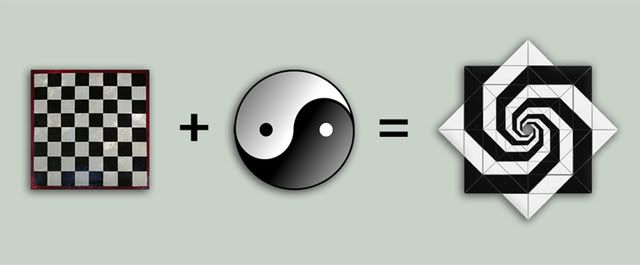

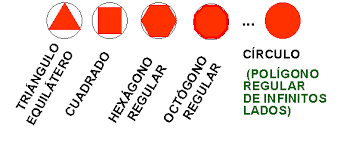 


EL SISTEMA HEXADECIMAL DE LAS COMPUTADORAS TIENE FUERTE CONNOTACION CON EL "AGUJERO DE GUSANO"
Tabla de conversión entre decimal, binario, hexadecimal y octal[editar]
| Decimal | Binario | Hexadecimal | octal |
| 0 |
00000 |
0 |
0 |
| 1 |
00001 |
1 |
1 |
| 2 |
00010 |
2 |
2 |
| 3 |
00011 |
3 |
3 |
| 4 |
00100 |
4 |
4 |
| 5 |
00101 |
5 |
5 |
| 6 |
00110 |
6 |
6 |
| 7 |
00111 |
7 |
7 |
| 8 |
01000 |
8 |
10 |
| 9 |
01001 |
9 |
11 |
| 10 |
01010 |
A |
12 |
| 11 |
01011 |
B |
13 |
| 12 |
01100 |
C |
14 |
| 13 |
01101 |
D |
15 |
| 14 |
01110 |
E |
16 |
| 15 |
01111 |
F |
17 |
| 16 |
10000 |
10 |
20 |
| 17 |
10001 |
11 |
21 |
| 18 |
10010 |
12 |
22 |
| 19 |
10011 |
13 |
23 |
| 20 |
10100 |
14 |
24 |
| 21 |
10101 |
15 |
25 |
| 22 |
10110 |
16 |
26 |
| 23 |
10111 |
17 |
27 |
| 24 |
11000 |
18 |
30 |
| 25 |
11001 |
19 |
31 |
| 26 |
11010 |
1A |
32 |
| 27 |
11011 |
1B |
33 |
| 28 |
11100 |
1C |
34 |
| 29 |
11101 |
1D |
35 |
| 30 |
11110 |
1E |
36 |
| 31 |
11111 |
1F |
37 |
| 32 |
100000 |
20 |
40 |
| 33 |
100001 |
21 |
41 |
Sistema hexadecimal
De Wikipedia, la enciclopedia libre
El sistema hexadecimal (a veces abreviado como Hex, no confundir con sistema sexagesimal) es el sistema de numeración posicional que tiene como base el 16. Su uso actual está muy vinculado a la informática y ciencias de la computación, pues los computadores suelen utilizar el byte u octeto como unidad básica de memoria; y, debido a que un byte representa  valores posibles, y esto puede representarse como valores posibles, y esto puede representarse como   , que equivale al número en base 16 , que equivale al número en base 16  , dos dígitos hexadecimales corresponden exactamente a un byte. , dos dígitos hexadecimales corresponden exactamente a un byte.
En principio, dado que el sistema usual de numeración es de base decimal y, por ello, sólo se dispone de diez dígitos, se adoptó la convención de usar las seis primeras letras del alfabeto latino para suplir los dígitos que nos faltan. El conjunto de símbolos sería, por tanto, el siguiente:

Se debe notar que A = 10, B = 11, C = 12, D = 13, E = 14 y F = 15. En ocasiones se emplean letras minúsculas en lugar de mayúsculas. Como en cualquier sistema de numeración posicional, el valor numérico de cada dígito es alterado dependiendo de su posición en la cadena de dígitos, quedando multiplicado por una cierta potencia de la base del sistema, que en este caso es 16. Por ejemplo: 3E0A16 = 3×163 + E×162 + 0×161 + A×160 = 3×4096 + 14×256 + 0×16 + 10×1 = 15882.
El sistema hexadecimal actual fue introducido en el ámbito de la computación por primera vez por IBM en 1963. Una representación anterior, con 0–9 y u–z, fue usada en 1956 por la computadora Bendix G-15.
|
|
|
|
Reply |
Message 279 of 309 on the subject |
|
| Reply |
Message 9 of 11 on the subject |
|
|
|
|
| Reply |
Message 10 of 11 on the subject |
|
|
|
|
| Reply |
Message 11 of 11 on the subject |
|
|
|
|
|
|
|
 First First
 Previous
265 a 279 de 309
Next Previous
265 a 279 de 309
Next Last
Last
|
|
| |
|
|
©2025 - Gabitos - All rights reserved | |
|
|
 The Feast of Weeks, also known as Pentecost was a celebration of thanksgiving at the end of the barley, grain and wheat harvests. In the Jewish faith, the Feast of Weeks also known as Shavuot commemorated the anniversary of Moses bring the law down from Mount Sinai in the tables of stone. You will find in this article that the timing of this holy feast day has been tampered with for many generations. The count to Pentecost/Shavuot in the bible is completely different than the count to Pentecost practiced by Jews and Christians today. To begin gaining an understanding of this statute of God, let’s look to scripture:
The Feast of Weeks, also known as Pentecost was a celebration of thanksgiving at the end of the barley, grain and wheat harvests. In the Jewish faith, the Feast of Weeks also known as Shavuot commemorated the anniversary of Moses bring the law down from Mount Sinai in the tables of stone. You will find in this article that the timing of this holy feast day has been tampered with for many generations. The count to Pentecost/Shavuot in the bible is completely different than the count to Pentecost practiced by Jews and Christians today. To begin gaining an understanding of this statute of God, let’s look to scripture: There has however been some misunderstanding in calculating the Feast of Weeks/Pentecost over the past many centuries. To find this misunderstanding we have to simply consult with God’s word itself. As mentioned earlier, according to the Jewish faith, this celebration is a commemoration of the giving of the Law by Moses at Mount Sinai. This understanding goes back thousands of years, yet today there is a problem. When you calculate the actual date that Moses came down from Mount Sinai with the Torah, this occured well after 50 days from the Day of Firstfruits (which falls on the 16th Day of the 1st Month). How can this be? All of Christianity, and the Jewish faith calculate Pentecost to be 50 days from the Day of Firstfruits, yet this doesn’t align with the purpose and history of the Feast? The reason for this, is that this feast has been miscalculated for hundreds of years. To calculate the exact date of Pentecost, one must use God’s lunar calendar, and obey the count given in Leviticus 23. Below is the count instructed:
There has however been some misunderstanding in calculating the Feast of Weeks/Pentecost over the past many centuries. To find this misunderstanding we have to simply consult with God’s word itself. As mentioned earlier, according to the Jewish faith, this celebration is a commemoration of the giving of the Law by Moses at Mount Sinai. This understanding goes back thousands of years, yet today there is a problem. When you calculate the actual date that Moses came down from Mount Sinai with the Torah, this occured well after 50 days from the Day of Firstfruits (which falls on the 16th Day of the 1st Month). How can this be? All of Christianity, and the Jewish faith calculate Pentecost to be 50 days from the Day of Firstfruits, yet this doesn’t align with the purpose and history of the Feast? The reason for this, is that this feast has been miscalculated for hundreds of years. To calculate the exact date of Pentecost, one must use God’s lunar calendar, and obey the count given in Leviticus 23. Below is the count instructed:










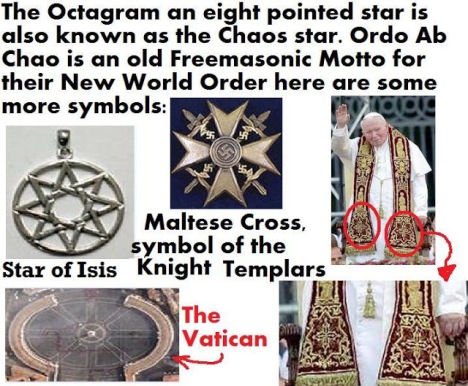
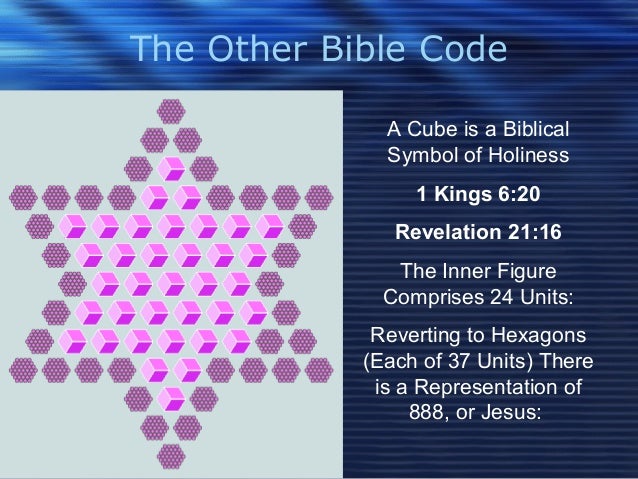













 valores posibles, y esto puede representarse como
valores posibles, y esto puede representarse como 
 , que equivale al número en base 16
, que equivale al número en base 16  , dos dígitos hexadecimales corresponden exactamente a un byte.
, dos dígitos hexadecimales corresponden exactamente a un byte.

